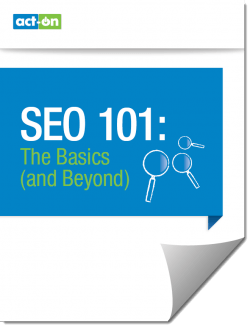 Just a few weeks ago, around October 17, SEO professionals received confirmation that Google was rolling out a much-anticipated algorithm update dubbed “Penguin 3.0.”
Just a few weeks ago, around October 17, SEO professionals received confirmation that Google was rolling out a much-anticipated algorithm update dubbed “Penguin 3.0.”
As recently as August, some people predicted that this update would “bring tears to your eyes.” But when it finally arrived, it seemed less impressive than past updates. (Caveat: It’s been a slow roll-out, and of November, 2014, it may not be done, so it’s too soon to call it painless.)
Penguin is important to you if you’re a business owner or marketer. On a monthly basis, search is likely the source of much of your referral traffic and, ultimately, your revenue. That means algorithm updates – Penguin among others – could potentially impact your revenue. Let’s learn more.
What is Penguin?
A bit of background: Search engines use algorithms to determine how to rank (and whether to penalize) sites and pages. Search engines never sleep in their quest to improve the user experience, so they make continual updates to their algorithms. The updates work to reward sites that fulfill searcher expectations, and work to eradicate spam used to manipulate rankings. Major updates are sometimes named: Pigeon, Pirate, Panda… and Penguin.
The Penguin update came after the much-publicized Panda update. Panda works to root out content spam, hitting sites with thin or spun content hard. Penguin is more focused on link spam.
Primarily, the Penguin update affected websites which participated in link schemes (such as buying links or acquiring links through link networks) in the effort to manipulate search rankings.
Not too long ago, a business could succeed online with a thrown-together site and search engine optimization done with a few black-hat tactics. No more. Search engines keep improving and can now identify many tactics of influence and manipulation – which they work to make powerless. Tactics that worked years ago, like submitting to free article directories or buying links on other sites to increase your Page Rank used to lead to better rankings in search results. Penguin has all but ended this.
But some marketers and webmasters still try to evolve new ways to manipulate results. (Tsk, tsk.) This means search engines must stay on top of trends to ensure that the quality of their results pleases users, so they research tirelessly and make iterative updates to their algorithms.
How Big is the Update’s Effect?
To put this into perspective, Google’s clean-up efforts with the first Penguin roll out impacted search results by over 3%; Penguin 3.0 seems to have affected fewer than 1% (as of this writing). Each iterative update rolled out since Penguin’s debut has aided in additional cleanup.
Penguin Update History
- Penguin 1.0 published on April 24, 2012 – 3.1% of search queries affected
- Penguin 1.1 published on May 26, 2012 – 0.1% of search queries affected
- Penguin 1.2 published on October 5, 2012 – 0.3% of search queries affected
- Penguin 2.0 published on May 22, 2013 – 2.3% of search queries affected
- Penguin 2.1 published on Oct. 4, 2013 – 1% of search queries affected
- Penguin 3.0 published on October 17, 2014 – 1% of search queries affected
What is Penguin 3.0?
“This refresh helps sites that have already cleaned up the webspam signals discovered in the previous Penguin iteration and demotes sites with newly discovered-spam” – Pierre Far, Webmaster Trends Analyst at Google
Google doesn’t give details on updates; it wouldn’t do to hand those keys out to the black-hat people. But analysts examining the winners and losers of Penguin 3.0 help us estimate what the suspected updates to the algorithm might be. Let’s dive in.
Winners in Penguin 3.0
From the Pierre Far quote above, we can speculate that the sites that should benefit from the Penguin refresh were the ones that likely had used manipulation tactics in the past, then cleaned up their acts (and backlinks!) and are going in the right direction today. The rankings for these sites probably won’t come up as high as they were previous to the penalties, but still there should be an upward trend. Big and small brands have been waiting on pins and needles for this update, touted by Google reps as the time when the hard work those sites had done to clean up their backlinks would finally be taken into consideration. Too bad the data doesn’t match up.
Searchmetrics shows the winners on October 19, just days after the suspected roll out. Ebay.com tops the list, along with many Australian domains. However, these domains were barely affected by prior Penguin-focused updates. Further analysis from SEO Bartosz Goralewicz in this article reinforces this, noting that specific sites who have recovered appeared to have been previously impacted by Panda-related updates – not Penguin. So what’s going on here? Possibilities:
- This is a slow roll out. It sometimes takes a while for an algorithm update to “do its thing.” We’ve seen other updates provide immediate impact, but Penguin 3.0 doesn’t look like an overnight update.
- We could be in test-and-see mode. Most Penguin-penalized sites (that went through the process of cleanup) did not recover with this latest 3.0 update. Google may be testing the effectiveness of this update and planning to refresh Penguin once more before the year is out.
- Sites improved but also lost value. It’s also possible that sites which cleaned up backlinks got rid of some of the good with the bad, losing value in the process.
- We expect too much. It’s not uncommon for Google to update its algorithm 500–600 times each year. Not every single one has huge winners and losers. Updates which are code-named often come with an expectation that they will largely impact search results, but not all do.
How to lose in Penguin 3.0
Continued use of manipulation tactics such as buying links and using link networks has some sites seeing ranking drops after the debut of Penguin 3.0. No reported penalties have been issued with this round of updates, but that doesn’t mean your site cannot be, or will not be, impacted. If you are conducting any of the following activities you still stand a chance of being penalized:
- Still buying links, renting links or trading links – publicly or privately within a network
- Solely using article marketing, press release marketing and/or guest blogging as a means to earn links
- Controlling the number of links you earn during a given time period
- Using networks to exchange links, exchange content or otherwise influence rankings
It is my hope that Penguin 3.0 renews the understanding that these strategies and tactics simply do not work. They are outdated tactics that put your site in jeopardy by risking the loss of your hard-earned rankings – today, and in the future. If you’re earning links through these means, then understand the risks you’re taking. Each update very well could be the last one your site makes it through.
What Does the Future Hold?
Some experts perceive that Penguin 3 was more like a refresh than an update. (See Drew Hendrick’s recent Inc. article.) Many expect to see continual Penguin refreshes, much like the monthly Panda updates we’ve seen this year. Others speculate that an update with more impact may be coming. SEOs are hopeful future refreshes will aid in fixing negative SEO, which reportedly was untouched with the recent update.
Bottom line: It’s still too soon to tell what the future may hold for Penguin- related updates. Links still matter, the quality of those links is important, and spam tactics should be avoided – at all costs.
Do you suspect a Penguin 3.0 hit? Tell us your story with Penguin in the comments below.
Penguin 3.0 resources
Google Penguin Recovery from Manual Action – Act-On Blog
The Complete Google Penguin Recovery Kit [Free Guide] – Vertical Measures
Worldwide Rollout Still in Process – Search Engine Land
Penguin 3.0: First Analysis – Bartosz Goralewicz
Penguin 3.0 Rollout Analysis and How to Understand It – Link Research Tools
(Image: “Blown-out Penguins” by Mark Dumont, used under a Creative Commons 2.0 license)
Other SEO resources
SEO 101: The Basics (and Beyond)


